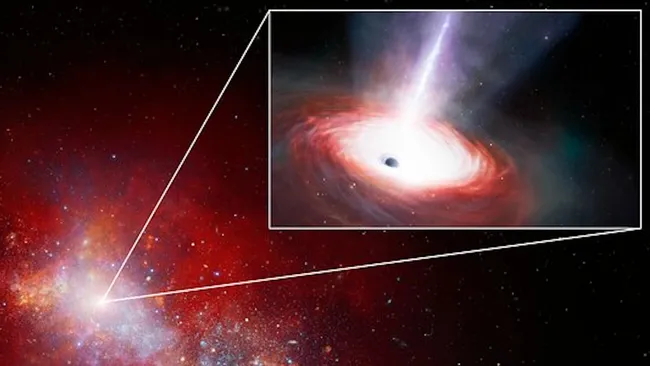Astronomers using the James Webb Space Telescope have spotted a feeding black hole in the early universe that seems to be eating 40 times faster than is theoretically possible.
Using JWST to get a closer look at ancient galaxies known to host intense, X-ray emitting objects, researchers uncovered evidence of a supermassive black hole that appears to be gobbling up matter at more than 40 times its theoretical limit.
Named LID-568 and observed just 1.5 billion years after the Big Bang, the object has been dubbed the fastest-feeding black hole in the early universe.
The discovery of this superlatively sloppy eater could be proof that some black holes are capable of temporarily surpassing their theoretical feeding limits — known as the Eddington limit — enabling them to grow incredibly quickly over short periods of time.
When observing LID-568 with JWST, the researchers discovered outflows of gas surrounding the black hole unlike anything ever seen.
The speed and size of these outflows pointed to a gargantuan black hole feeding episode, in which the cosmic monster briefly ate at a rate that far exceeded its Eddington limit.
(Each black hole has its own Eddington limit, which relates an object's luminosity, or brightness to the speed at which it can absorb mass.)
Source
Using JWST to get a closer look at ancient galaxies known to host intense, X-ray emitting objects, researchers uncovered evidence of a supermassive black hole that appears to be gobbling up matter at more than 40 times its theoretical limit.
Named LID-568 and observed just 1.5 billion years after the Big Bang, the object has been dubbed the fastest-feeding black hole in the early universe.
The discovery of this superlatively sloppy eater could be proof that some black holes are capable of temporarily surpassing their theoretical feeding limits — known as the Eddington limit — enabling them to grow incredibly quickly over short periods of time.
When observing LID-568 with JWST, the researchers discovered outflows of gas surrounding the black hole unlike anything ever seen.
The speed and size of these outflows pointed to a gargantuan black hole feeding episode, in which the cosmic monster briefly ate at a rate that far exceeded its Eddington limit.
(Each black hole has its own Eddington limit, which relates an object's luminosity, or brightness to the speed at which it can absorb mass.)
Source






















